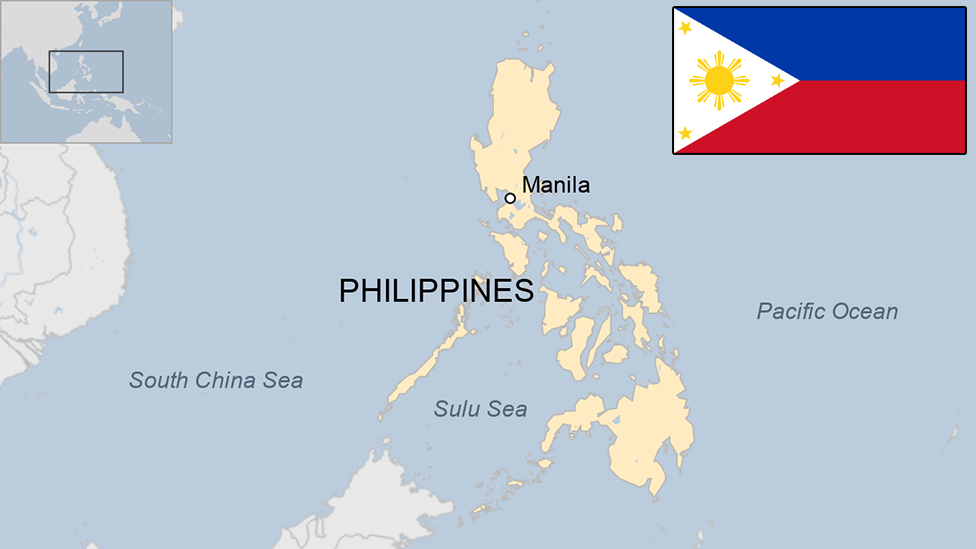Typhoon Haiyan: Philippines battles to bring storm aid
- Published
“An enormous four-metre storm surge swept into the coast, crushed all of these buildings”, reports Rupert Wingfield-Hayes
The authorities in the Philippines are struggling to bring relief to some of the areas worst affected by Typhoon Haiyan, one of the deadliest storms ever to hit the country.
Up to 10,000 are said to have died in Tacloban city and hundreds elsewhere. Hundreds of thousands are displaced.
The typhoon flattened homes, schools and an airport in Tacloban.
Relief workers are yet to reach some towns and villages cut off since the storm.
In many areas there is no clean water, no electricity and very little food.
Thousands of troops have been deployed to the disaster zones and military cargo planes are flying in supplies. However, rescuers are hampered by debris and damaged roads.
Jenny Dela Cruz has lost 11 members of her family including her two-year-old daughter, reports Jon Donnison
Pope Francis pleaded for aid for the victims in the mostly Catholic country, saying: "Sadly, there are many, many victims and the damage is huge. Let's try to provide concrete help."
US President Barack Obama issued a message saying he was "deeply saddened by the loss of life and extensive damage" and praising the "incredible resiliency of the Philippine people".
Typhoon Haiyan has now made landfall in Vietnam, near the tourist destination of Ha Long Bay, but as a much reduced Category One, with sustained winds of up to 140 km/h (85mph).
Some 600,000 people were evacuated in northern provinces.
'Not enough manpower'
The relief efforts in the Philippines are being focused on the eastern province of Leyte and its capital Tacloban.
But officials in the city said they were struggling to distribute aid, looting was widespread and order was proving difficult to enforce.
Footage has emerged of people caught in the floodwaters in Tacloban on Friday
In some areas, the dead are being buried in mass graves.
Houses have been flattened by the massive storm surge that accompanied Typhoon Haiyan.
"There is looting in the malls and large supermarkets. They are taking everything, even appliances like TV sets. These will be traded later on for food," said Tacloban city administrator Tecson John Lim.
"We don't have enough manpower. We have 2,000 employees but only about 100 are reporting for work. Everyone is attending to their families."
President Benigno Aquino, who has visited Tacloban, pledged to send 300 police and soldiers to "bring back peace and order".
But local residents fear for their safety.
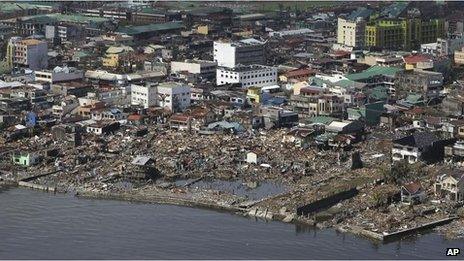
An aerial shot shows the devastation in Tacloban
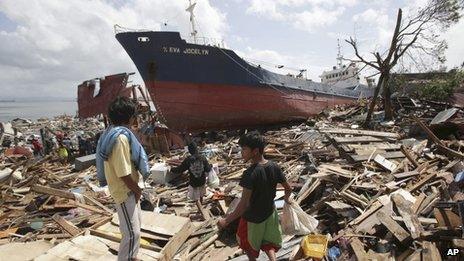
The storm was so powerful that it washed large ships ashore in the city
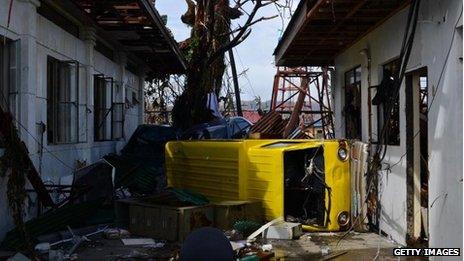
A storm surge up to 10m high swept away vehicles
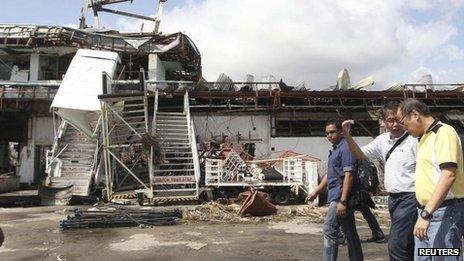
Philippine President Benigno Aquino surveyed the damage at Tacloban airport
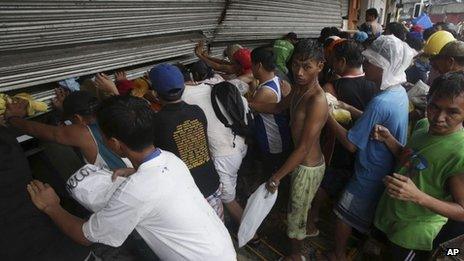
People have been struggling to find food and looting has been reported
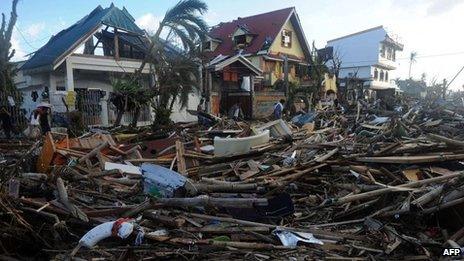
The nearby town of Palo was also devastated
"Tacloban is totally destroyed. Some people are losing their minds from hunger or from losing their families," high school teacher Andrew Pomeda told AFP news agency.
"People are becoming violent. They are looting business establishments, the malls, just to find food, rice and milk... I am afraid that in one week, people will be killing from hunger."
The BBC's Rupert Wingfield-Hayes reports that the scene in Tacloban is one of utter devastation.
He says hundreds of people are at the airport, itself badly damaged, trying to get on a flight out of the city.
Philippine Interior Secretary Mar Roxas said the scale of the relief operation that was now required was overwhelming, with some places described as a wasteland of mud and debris.
"From a helicopter, you can see the extent of devastation. From the shore and moving a kilometre inland, there are no structures standing. It was like a tsunami," he told Reuters.
A UN official who arrived in Tacloban on Saturday, Sebastian Rhodes Stampa, said he was told there had been a 3m (10ft) water surge through the city, in places up to 10m.
Meanwhile Leo Dacaynos, an official in Eastern Samar province, told local radio 300 people had been found dead in a single town, Basey, with another 2,000 missing and many injured.
Communication is still limited in many areas.
In Guiuan, a town of 40,000 people near where the typhoon made landfall, television footage showed flattened houses and roads strewn with debris.
One woman told the ABS-CBN channel: "I have no house, I have no clothes. I don't know how I will restart my life... I don't know what happened to us. We are appealing for help. Whoever has a good heart, I appeal to you - please help Guiuan."
The town of Baco, in Oriental Mindoro province, to the north-west, is said to be 80% under water.
The latest report, external from the Philippines' Disaster Risk Reduction and Management Council confirmed 229 deaths as of 11:00 GMT on Sunday. It said almost 630,000 people had been reported displaced.
The Philippines has been offered aid from overseas:
US Defence Secretary Chuck Hagel said the US was delivering helicopters, fixed-wing aircraft and search and rescue equipment on request
The European Commission released 3m euros ($4m; £2.5m) in emergency funds and is sending a team of humanitarian experts
The UK Rapid Response Facility is to provide £5m ($8m) in aid and a £600,000 shipment of emergency equipment. A team of four experts is already in the disaster zone
The UN is to provide tents, food and relief supplies
Typhoon Haiyan - one of the most powerful storms on record to make landfall - swept through six central Philippine islands on Friday.
It brought sustained winds of 235km/h (147mph), with gusts of 275 km/h (170 mph), with waves as high as 15m (45ft), bringing up to 400mm (15.75 inches) of rain in places.

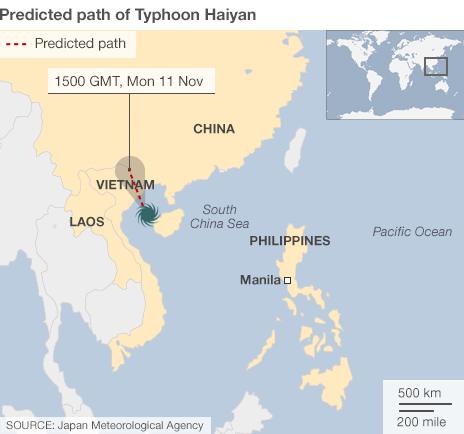
- Published8 November 2013
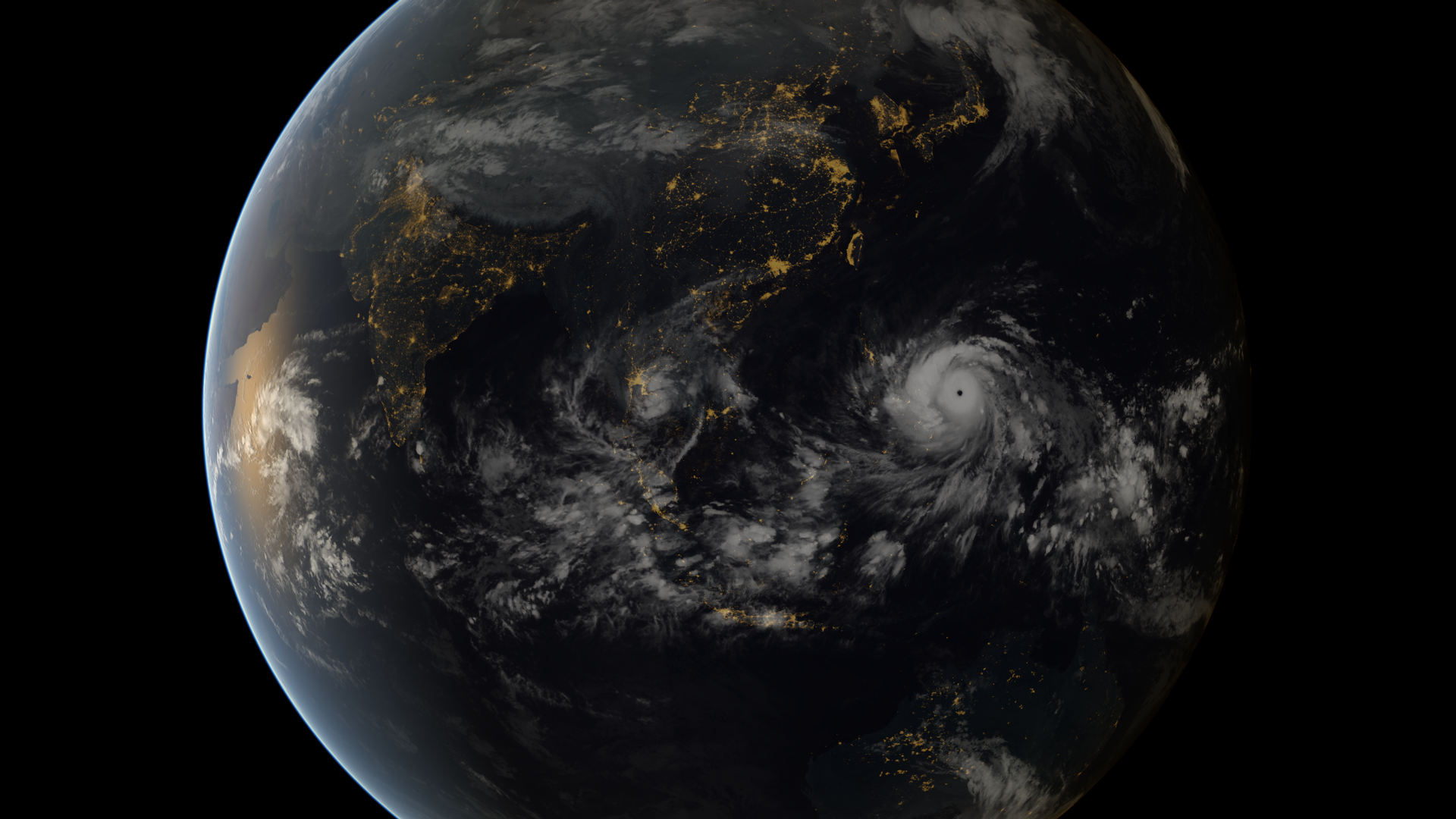
- Published10 November 2013
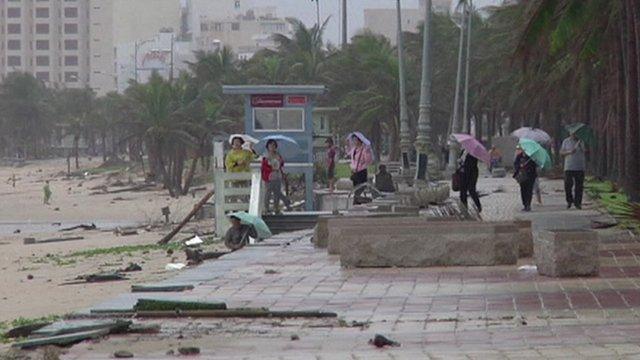
- Published11 November 2013
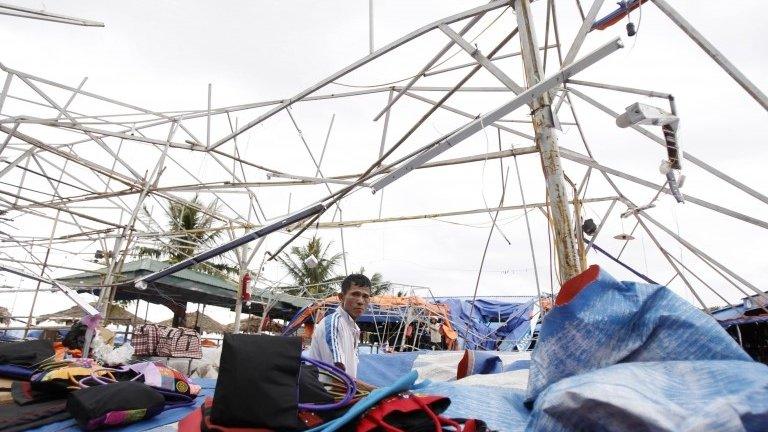
- Published10 November 2013
- Published5 July 2023
